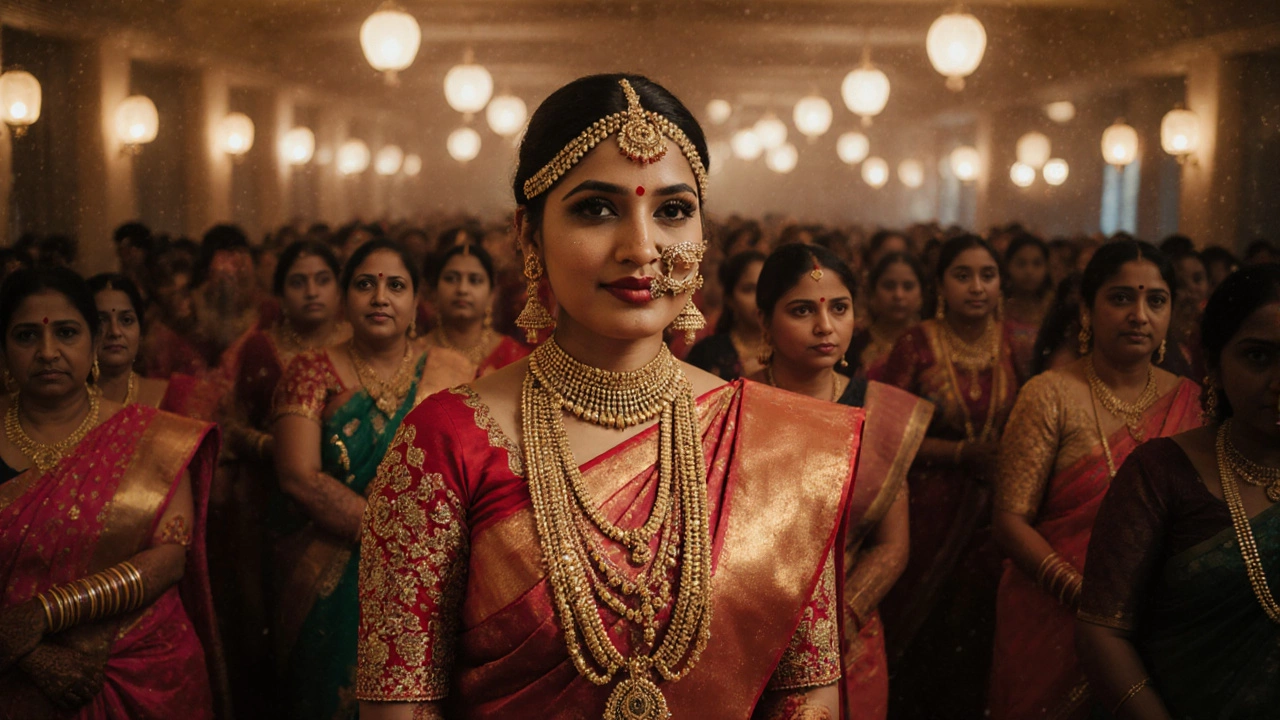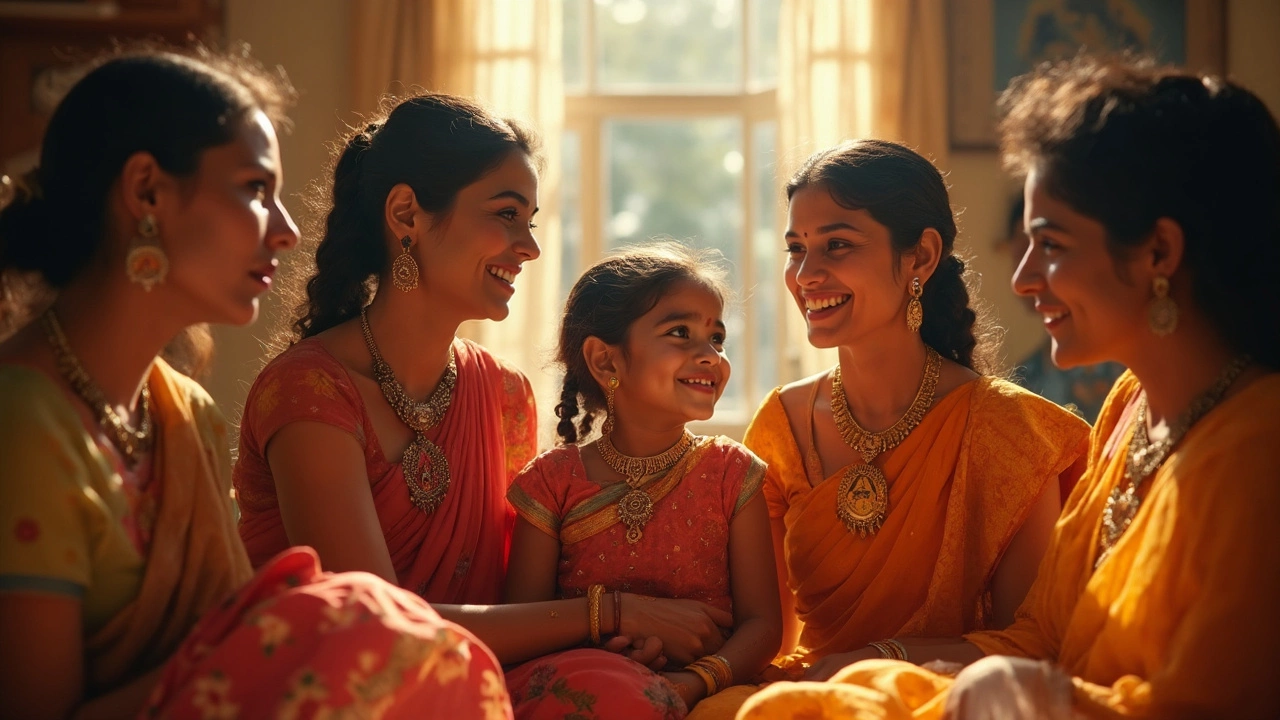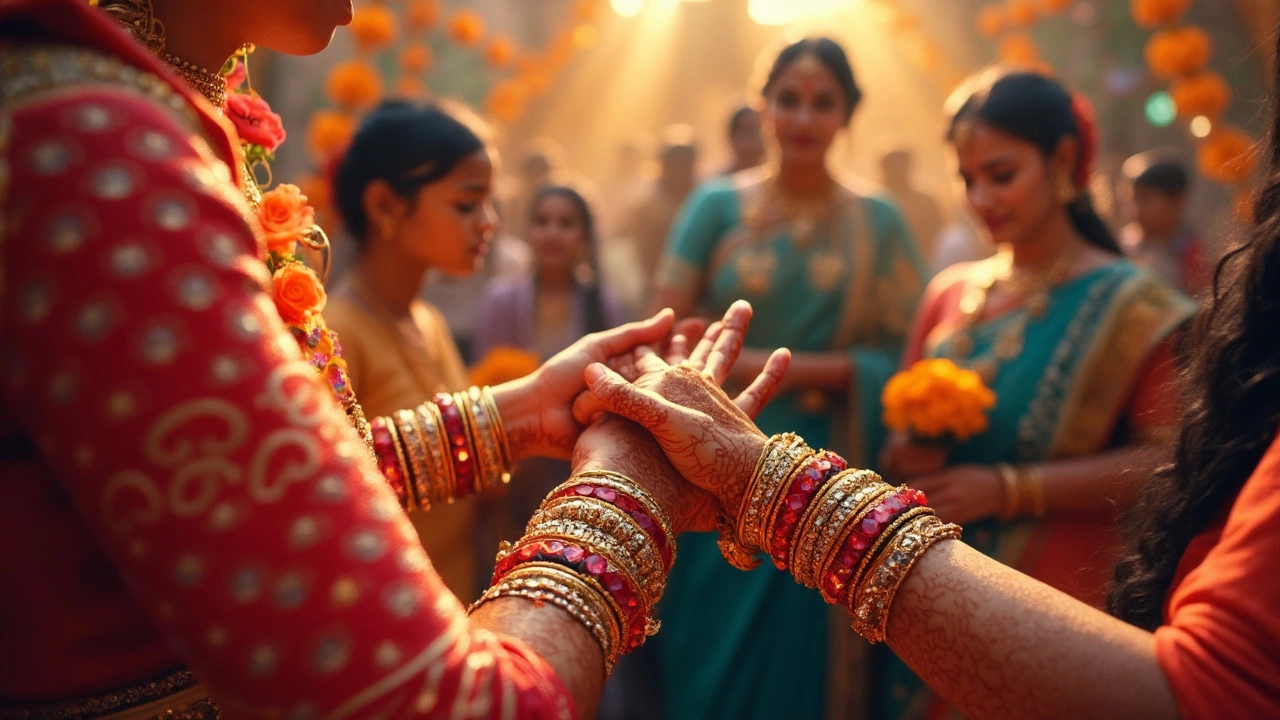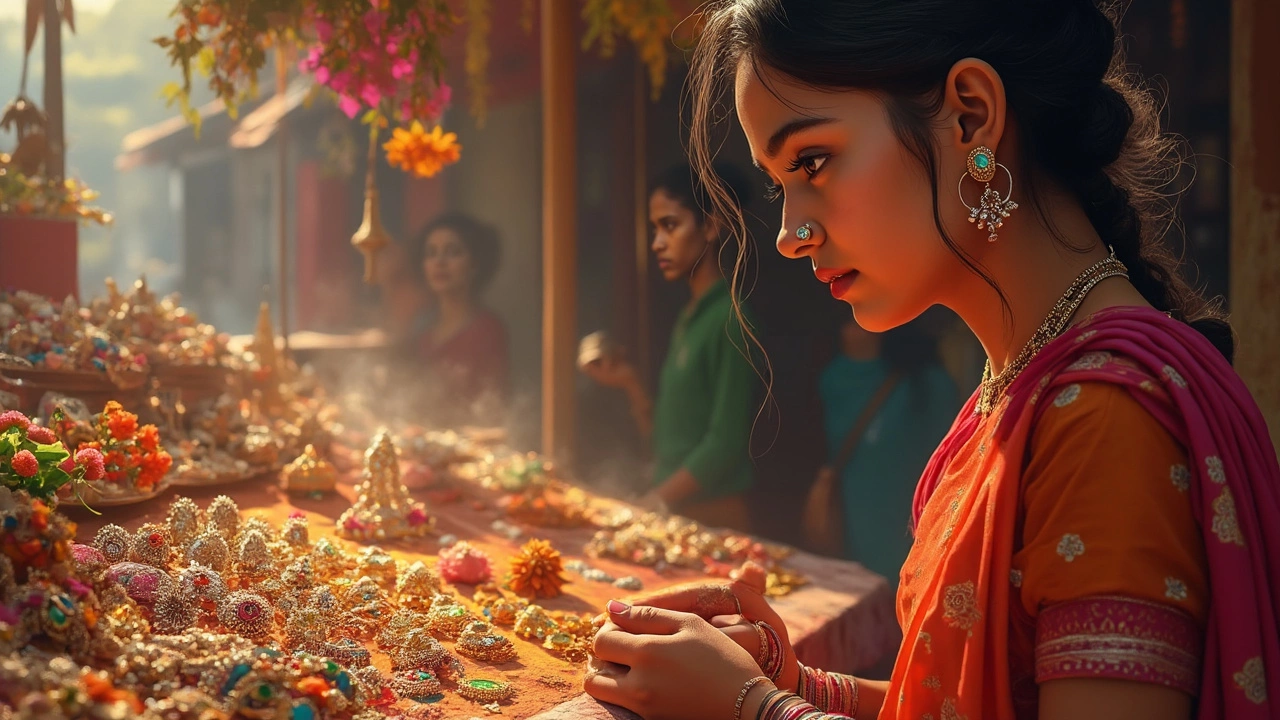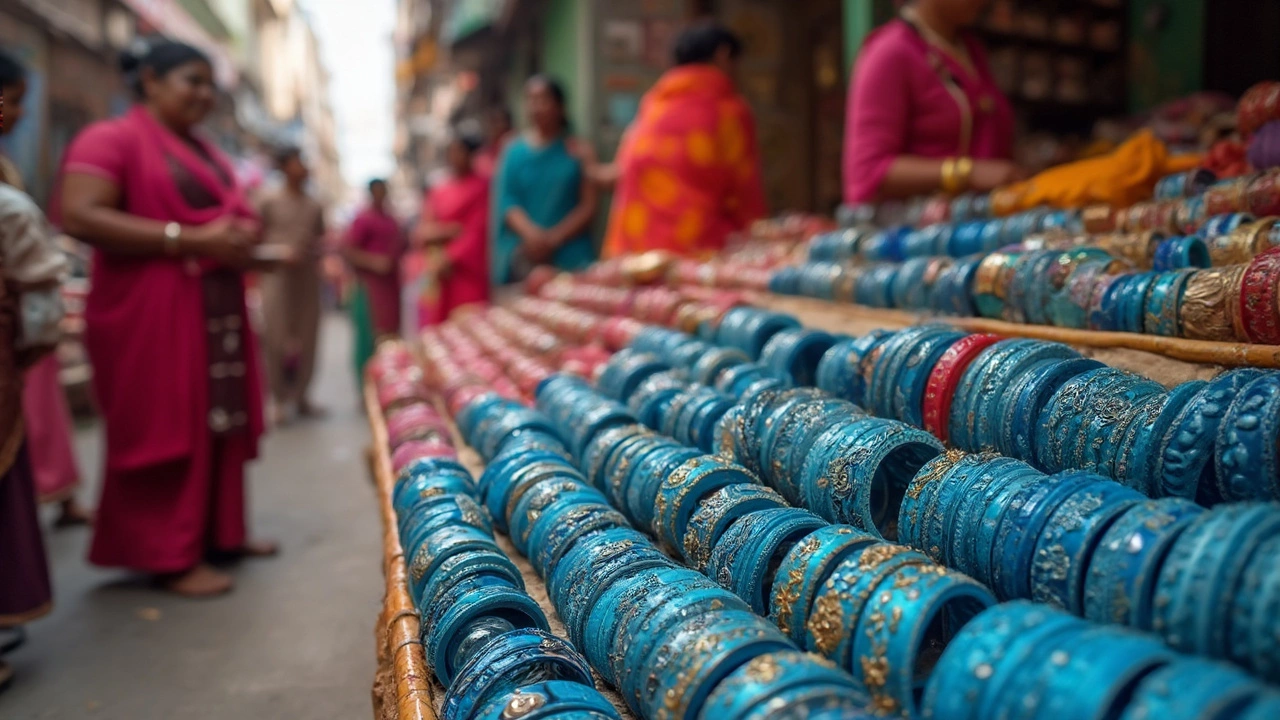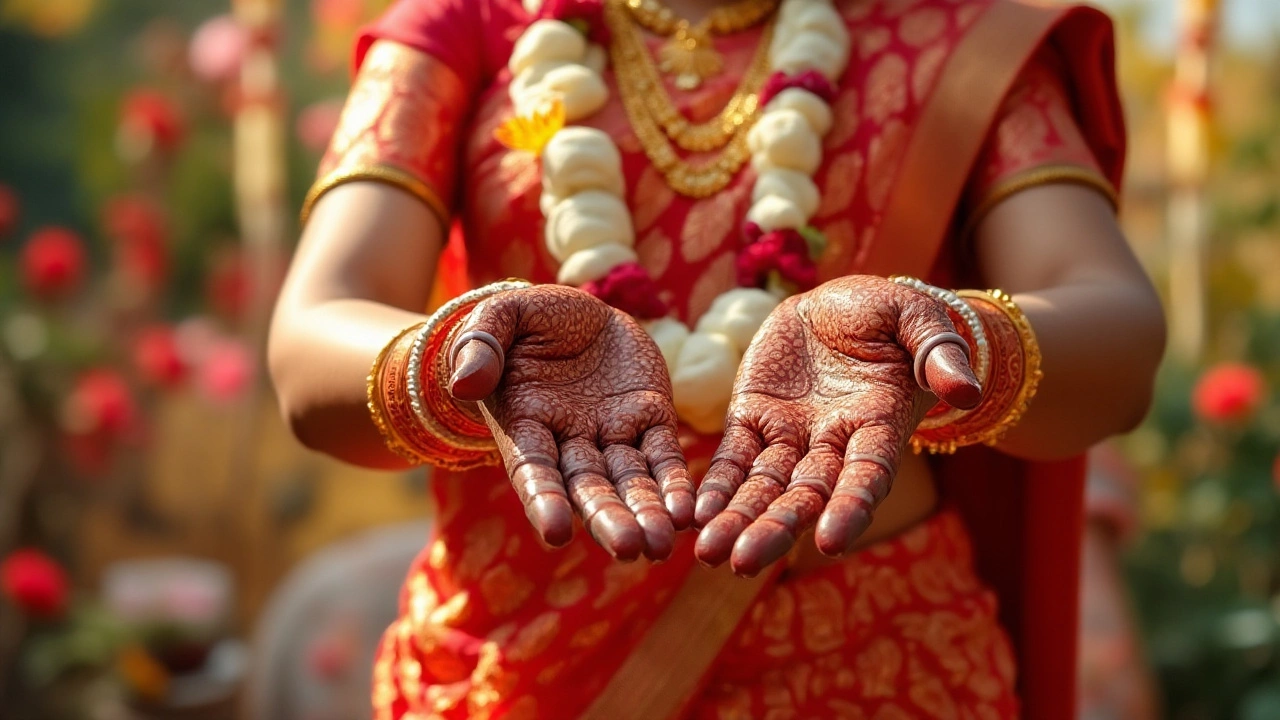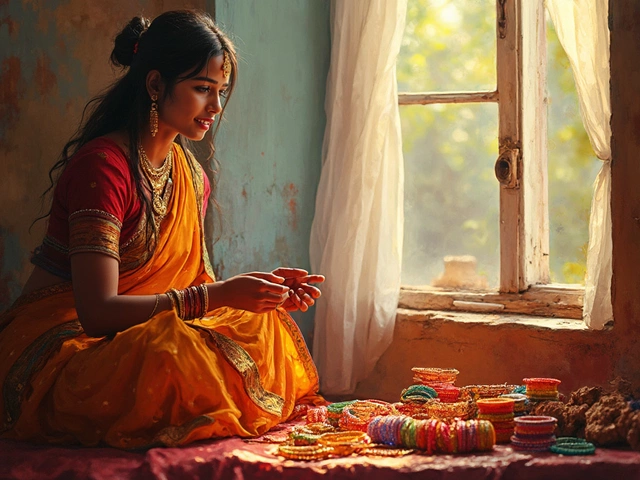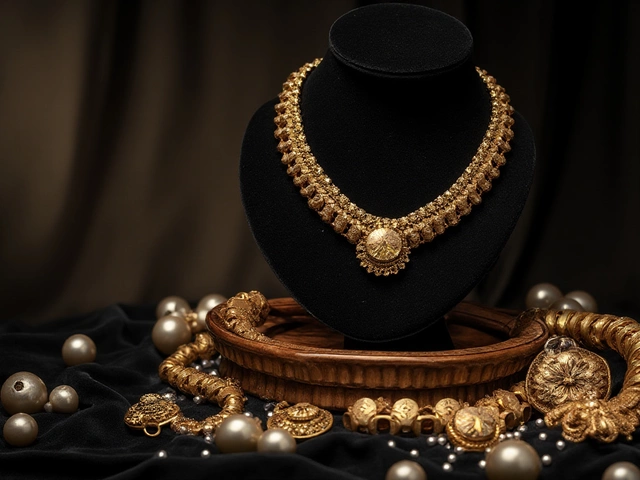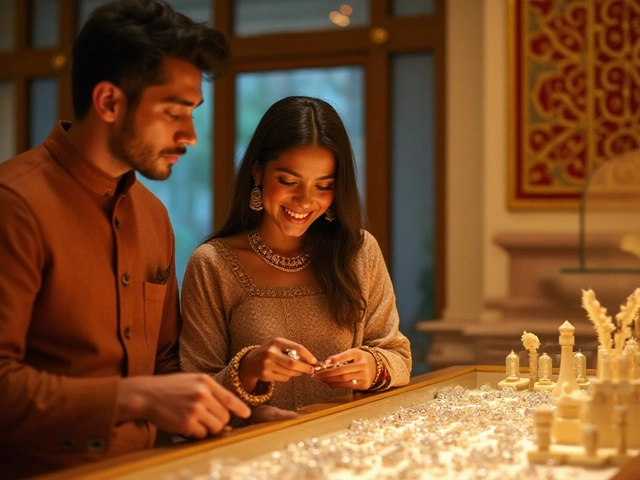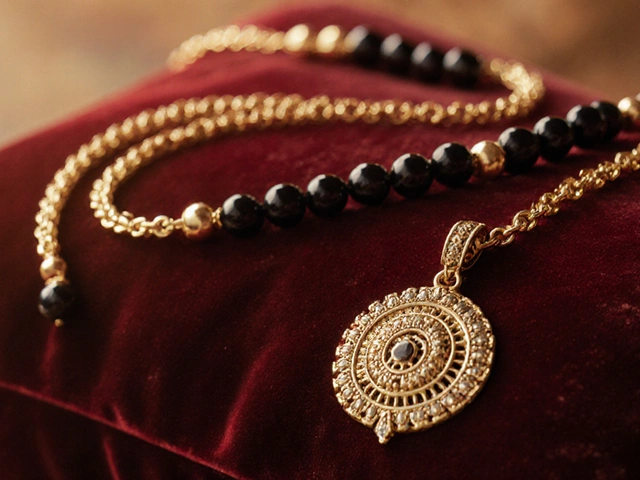Cultural Significance of Indian Jewelry
Indian jewelry isn’t just about sparkle; it’s a living record of customs, beliefs, and family ties. Every piece—from a simple nose pin to a heavy mangalsutra—tells a story that’s been passed down for generations.
Every Ornament Has a Tale
Take black bangles, for instance. They’re not just a fashion statement. Traditionally, they protect against the evil eye and symbolize a woman’s strength. Wearing them at festivals or weddings adds a layer of protection and pride.
Similarly, black beads in a mangalsutra hold a myth‑rooted meaning. They’re believed to ward off negativity and keep marital harmony. The design may change with trends, but the core belief stays the same.
Nose studs have a rich religious link too. In Hindu culture, the left nostril is associated with the female reproductive system, and piercing it is thought to ease childbirth. Over time, the style evolved, yet the spiritual connection remains strong.
Why It Matters When You Shop
Understanding the cultural backdrop helps you choose pieces that resonate with you. If you’re buying a gift, knowing the symbolism adds emotional value—like picking a gold mangalsutra for a marriage anniversary.
Even modern trends respect tradition. Designers blend classic motifs with contemporary cuts, so you can wear something that feels fresh but still honors heritage. This mix is why Indian jewelry stays popular worldwide.
When you shop at RH Jewellers, you get more than just a product. You get a piece of history that fits your style today. Our collection reflects the diverse cultural meanings described above, ensuring you find something that feels personal and meaningful.
Remember, every time you click on a pair of earrings or a bangle, you’re also connecting with centuries of art, belief, and family values. That’s the real power of cultural significance in Indian jewelry.
So next time you pick a piece, think about the story it carries. Whether it’s a nose pin for a bridal look, a set of black bangles for protection, or a mangalsutra that seals a promise, you’re wearing more than metal—you’re wearing culture.
Why Indians Wear So Much Jewelry: Cultural Roots and Regional Styles
Explore why Indians wear abundant jewelry, covering cultural roots, regional styles, key pieces, symbolism, and practical tips for curating traditional adornments.
Temple Jewellery India: Why Do Indians Wear So Much Jewelry?
India's love for jewelry isn't just about looking good—it's packed with tradition, meaning, and even a bit of superstition. This article digs into why Indians wear so much jewelry, shining a spotlight on the special world of temple jewellery. You’ll find out how jewelry ties into culture, religion, and daily life, plus get tips on when and how to wear different pieces. Real stories, practical advice, and eye-opening facts: it’s all here for anyone curious about this sparkling part of Indian life.
Nose Pin Symbolism: What Does It Really Mean?
Nose pins are not just a fashion trend; they're rich in cultural and historical significance. From weddings in India to style statements in the West, nose pins carry unique meanings and symbolism. This article explores the various interpretations of nose pins across different cultures and their evolving designs. Whether it’s a symbol of femininity, marital status, or rebellion, nose pins offer more than meets the eye.
The Significance of Wearing Bangles in India
Bangles are deeply embedded in Indian culture, often symbolizing tradition, beauty, and identity. From their historical origins to cultural implications, bangles hold a special place in Indian ceremonies and everyday life. They’re not just accessories but are tied to customs and beliefs, like symbolizing marital status. This article explores the nuances of bangle-wearing across different regions and occasions in India.
Exploring the Meaning Behind Left Nose Piercings
Wondering what a left nose piercing signifies? This article uncovers the cultural, historical, and symbolic meanings associated with wearing a nose pin on the left side. Discover tips on choosing the perfect nose pin design, learn about the trends, and grasp how this accessory has evolved over time. Whether you're considering a piercing or already flaunt one, you'll find something intriguing here.
Why Sikhs Carry a Kirpan: Understanding its Religious and Cultural Significance
The Kirpan, a ceremonial curved dagger, holds profound significance in Sikhism. It symbolizes courage, self-defense, and a commitment to social justice. Learn about its historical roots, spiritual meaning, and everyday practice among Sikhs, as well as the challenges they face in modern society. Offering insights into its cultural and religious aspects, this article unpacks why carrying a Kirpan is not only a choice but a cherished tradition.
The Symbolism of Blue Bangles in Indian Culture
Blue bangles hold a special place in Indian culture, symbolizing peace, tranquility, and loyalty. Their significance varies across regions, reflecting personal meanings and age-old traditions. This article explores their cultural roots, symbolic meanings, and the unique ways they are used in celebrations and day-to-day life. Discover why these vibrant adornments continue to captivate and resonate in modern times. Learn how blue bangles can be a meaningful addition to personal style or a thoughtful gift.
Why Sikhs Carry a Kirpan: Understanding Its Religious Importance
The kirpan is more than just a ceremonial dagger for Sikhs; it symbolizes deep religious and cultural meanings. This article explores why carrying a kirpan is significant in the Sikh faith, delving into its historical roots and how it is both a duty and a reminder of the values Sikhs cherish. Understanding this tradition opens a broader perspective on Sikhism and its practices.
Exploring the Beauty and Significance of Shakha Bangles
Shakha bangles are an integral part of Bengali marital customs, symbolizing the sacred bond of marriage. These elegant white bangles, typically crafted from conch shell, are worn by married Bengali women as a mark of their married status and commitment. The tradition of wearing Shakha is steeped in cultural significance, with each pair of bangles carrying unique meanings and stories. Understanding the origins, symbolism, and manufacturing process of Shakha bangles offers insight into the rich tapestry of Bengali cultural heritage.
Cultural and Symbolic Significance of Wearing a Mangalsutra
The mangalsutra is a sacred necklace worn by married Hindu women as a symbol of their marital status and their commitment to their spouse. Traditionally, it signifies the union of two souls and is an important part of Hindu wedding rituals. With its roots deep in Indian culture, the design of a mangalsutra often varies across regions, embodying a blend of tradition and personal expression. This article explores the history, cultural importance, and contemporary designs of the mangalsutra, offering insights into both its ceremonial and modern-day adaptations.
